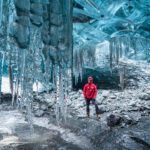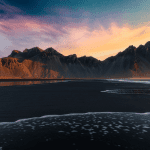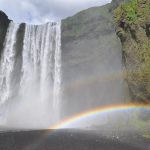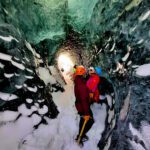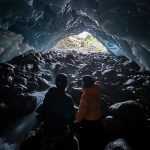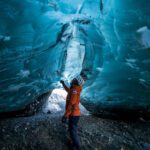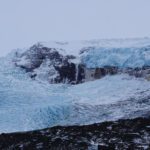When you picture your dream trip to Iceland, do you imagine beautiful snowy landscapes and dark nights lit by the stunning green river of the Northern Lights?
There’s no doubt that winter in Iceland is filled with beautiful sights and unforgettable experiences. But what is it like to spend winter days in a country this close to the Arctic Circle? Well, let us explain!
Many of our adventure trips and courses in Iceland run throughout the winter, so we’re familiar with what this season has in store for locals and visitors alike! If you’re asking yourself, “How challenging is winter in Iceland?”, scroll down to find out more.
And if you have any questions for the Ice Guardians team, please get in touch for the answers you need.
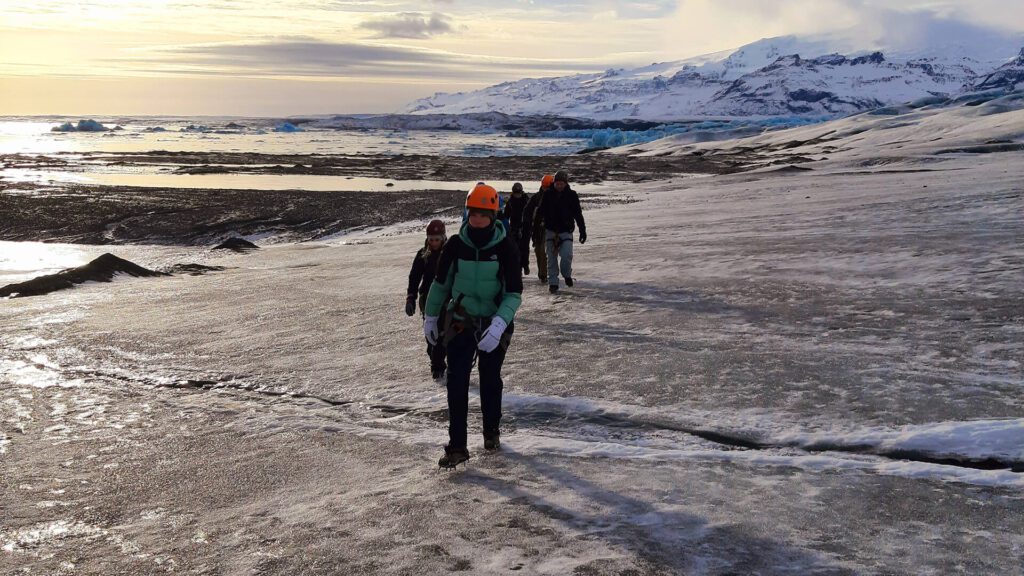
What is the Weather in Iceland Like in Winter?
Temperatures
The main mass of Iceland sits just to the south of the Arctic Circle. But we’re close enough that part of Grimsey Island, a small outcrop off the north coast, crosses the latitude 66° 33′ north.
However, our winters are surprisingly mild (relatively speaking!) given our proximity to the North Atlantic Gyre, a circular ocean current that helps to keep temperatures up.
You can still expect average temperatures in winter to dance around freezing, dipping below zero quite often, but this is far more manageable than conditions in other northern countries!
January and February are the coldest culprits, where you might find yourself shivering at around -2 to -3 degrees Celsius. So, bundle up and channel your inner yeti!
Wind
Hold onto your hats, folks! Winter brings some rather enthusiastic winds, gusting their way across the landscape with a vigour you may not have experienced before. These winds can turn a crisp day into a teeth-chattering affair, making the cold feel even colder. Be sure to pack that windproof gear and brace yourself!
Snow and Ice
Snowfall in Iceland is common during winter, especially in the more remote, mountainous areas. Expect a snowy blanket thrown over the scenery, adding a charming layer to the landscape.
However, it’s not all picturesque. Many roads become inaccessible and dangerous during winter, so they remain closed for months at a time. And ice on the open roads isn’t always easy to spot, so keep an eye out for slippery patches, especially if you’re planning to hit the road in a rental car at any point.
If you’re looking for even more holiday-planning inspiration, read our blog How Should I Plan My Trip to Iceland after this one.
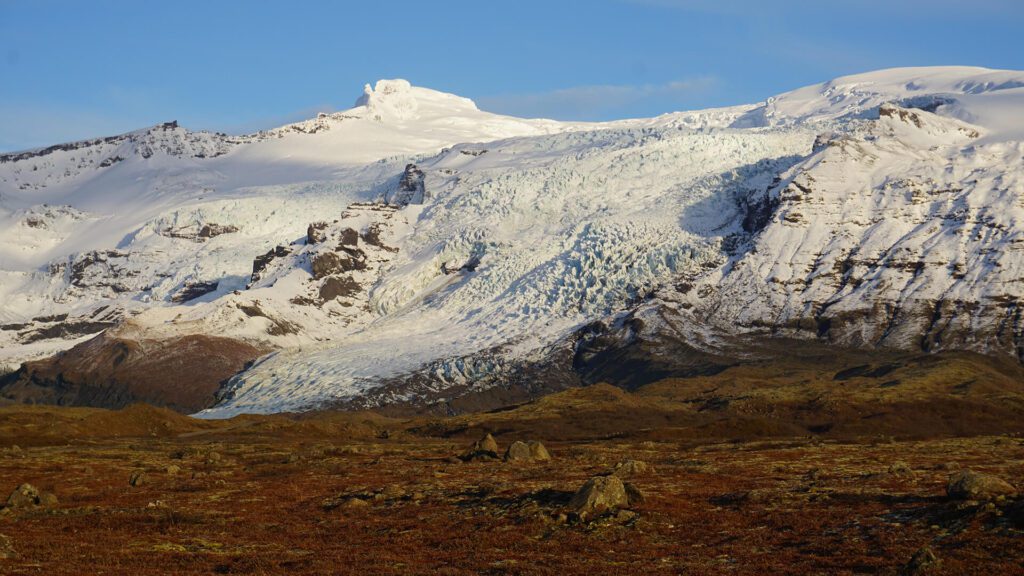
How Much Daylight is There During Winter in Iceland?
Daylight hours in winter are quite a precious commodity in Iceland! By the end of October, we’re already down to around eight hours. Come the middle of December, we’re at a maximum of around five hours.
So, what does that look like? Picture sunrise around 11 am and sunset between 3 and 4 pm.
Of course, you must factor this scarcity of light into your sightseeing plans. You can still enjoy many of the most exciting things to do in Iceland, but you should arrive with appropriate expectations and a plan!
And remember, all that darkness sets the stage for the Northern Lights… but more on that below.
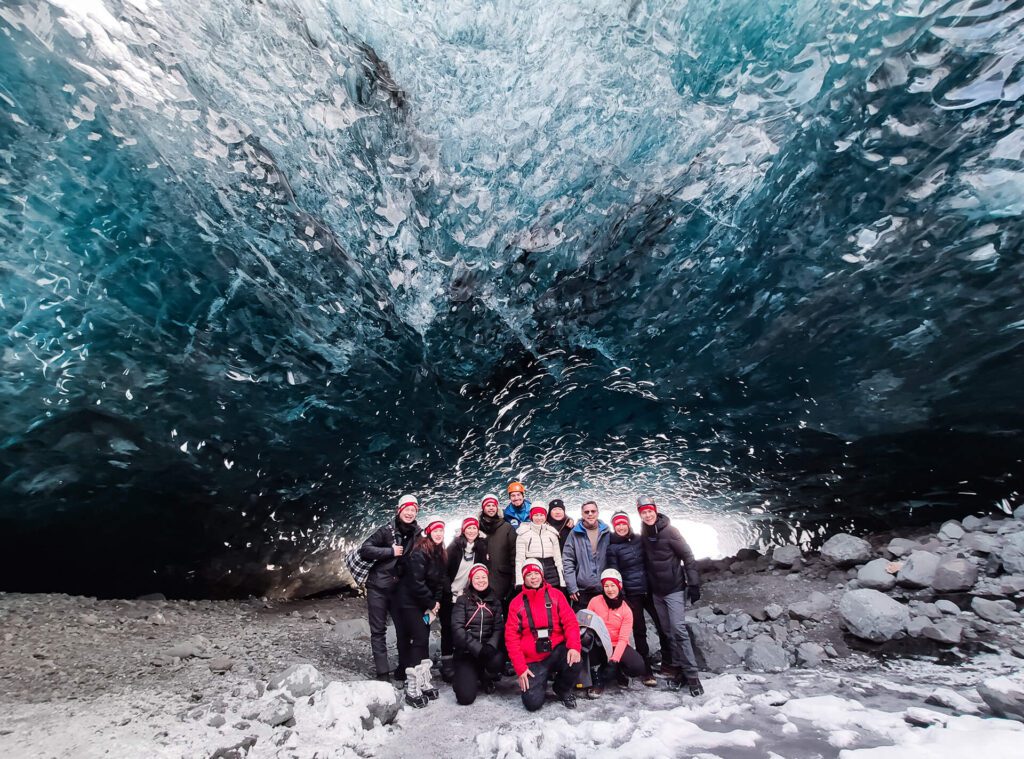
What Winter Activities Can You Do in Iceland?
Winter Activities
Now, onto the fun part! The cold might nip at your nose, but you’ll soon forget about it when the adventures begin! Winter is the perfect time to enjoy Iceland glacier hiking, glacier ice cave tours, and even private ice climbing on Vatnajökull glacier!
Read our Ultimate Guide to Visiting Ice Caves in Iceland for a taster of the adventures you can experience with us!
You can also show off your graceful ice skating moves or feel the thrill of skiing or snowboarding. And for an even bigger adrenaline kick, there’s always snowmobiling to get your heart racing!
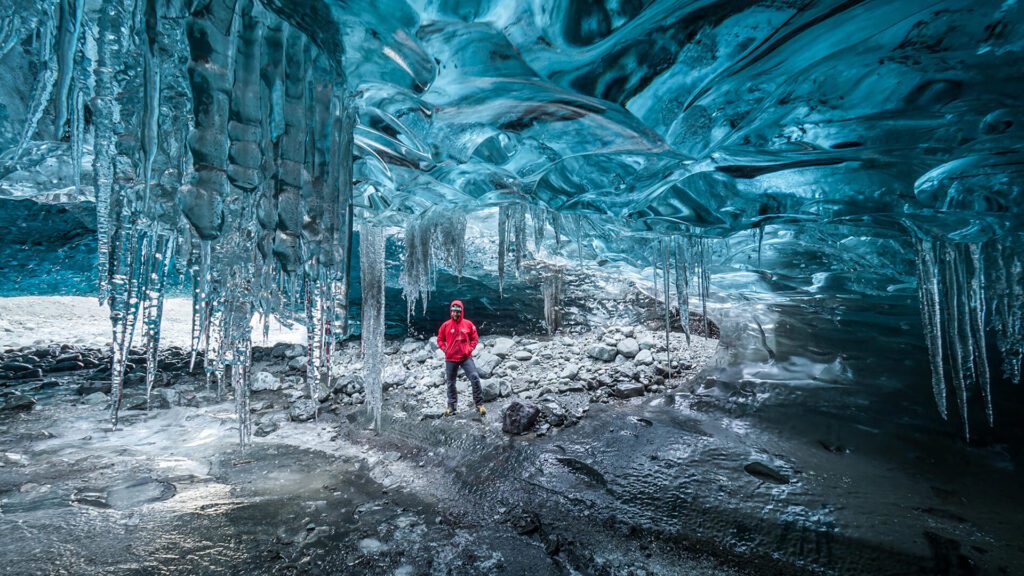
Hot Springs
Do you know what pairs perfectly with frosty temperatures? A dip in a toasty hot spring! These geothermal wonders, like the famous Blue Lagoon, are not just warm havens in the cold; they’re a cultural institution here.
Soaking in the mineral-rich water comes with numerous benefits, other than simply taking some time to relax, of course. Sitting in a hot spring can ease sore joints and muscle pain, improve circulation, and soothe skin conditions like eczema and psoriasis.
Aside from the Blue Lagoon, some of the other hot springs in Iceland worth your consideration include:
- Sky Lagoon
- Hvammsvík Hot Springs
- Myvatn Nature Baths
- Vök Baths
- Forest Lagoon
- GeoSea Sea Baths
If you want to visit some of Iceland’s other iconic destinations on your trip, check out our sample Iceland south coast itinerary. This region is rich in natural wonders, spectacular vistas, and unique experiences.
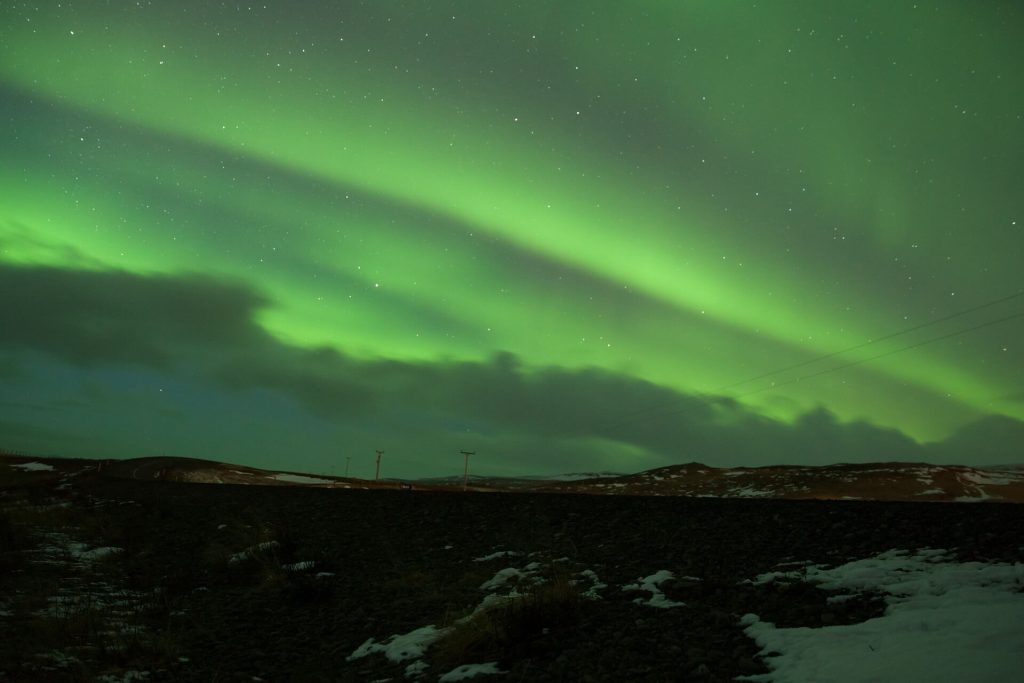
Winter is Prime Time for the Northern Lights in Iceland!
Picture the scene: vibrant ribbons of green, purple, and sometimes even pink dance across the dark winter sky as you gaze up in wonder. Winter is prime time for this breathtaking display, thanks to those long nights.
One of the best things about winter in Iceland is knowing that the Northern Lights can appear overhead at any moment. All you need to do is find a place with low-light pollution on a clear night and hope that your luck is in!
Keep tabs on the Northern Lights forecast from the Icelandic Met Office to get an idea of when the aurora is likely to appear, then find your spot and watch the skies! We recommend the free hello aurora app on iOS and Android which compiles this data and includes live sightings by other users.
Find out even more about this bucket-list experience in our blog Chasing the Northern Lights in South Iceland.

General Tips for Surviving Iceland’s Winter
- Dress Like an Onion: Layers, layers, layers! Think onions but without the tears. Thermal wear, waterproof clothing, baselayers – anything that’ll make you feel like a walking, talking duvet.
- Protect Your Feet: Sturdy boots are your new best friend. Break them in before you come; trust us, you’ll thank us later. We want to ensure that boots are not too tight and socks are not too constricting on the blood vessels around your feet. We’d say bring more socks than you think you’ll need! You can layer up if you get chilly or quickly replace a pair that gets wet and cold but with socks we’d say it’s all about quality over quantity.
- Gloves Galore: You can never have too many gloves. Trust us! If yours get wet or torn on an outdoor adventure, your hands won’t thank you! Having a backup pair or two for all eventualities is a small act with a huge upside!
- Weather Watcher: Before setting off on any grand adventures, check the weather forecast and current road conditions. Flexibility is key, especially if old man Winter decides to throw a snowball or two in your plans.
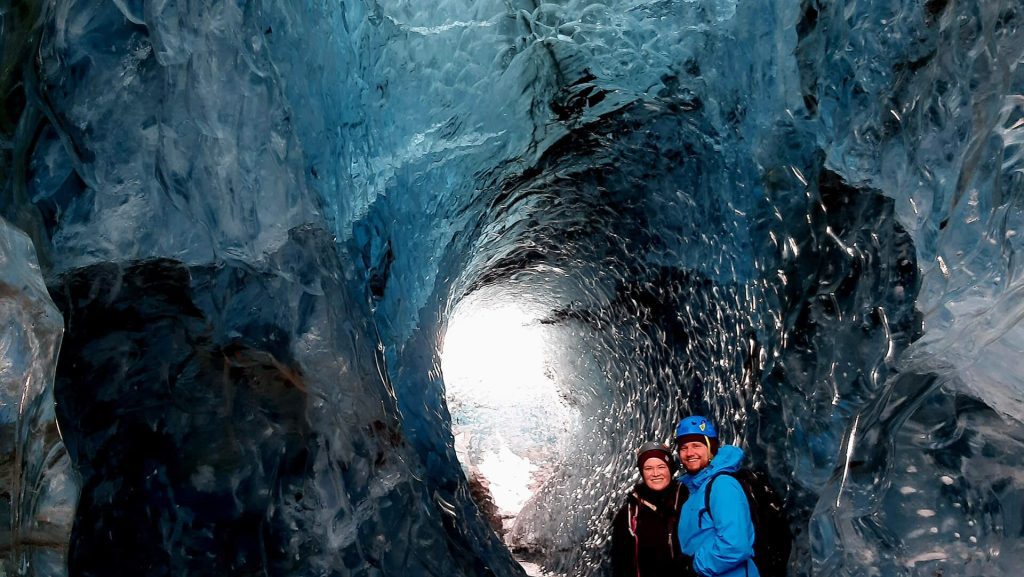
Book Your Iceland Adventure Tours This Winter!
So, how challenging is winter in Iceland? The only way to answer this question is to experience it for yourself!
If we’ve inspired you to visit this winter, browse our Iceland adventure trips and courses to reserve your spot on an Ice Guardians excursion.
Our team is here to help you have the best experience possible, so please get in touch if you have any questions for us.
